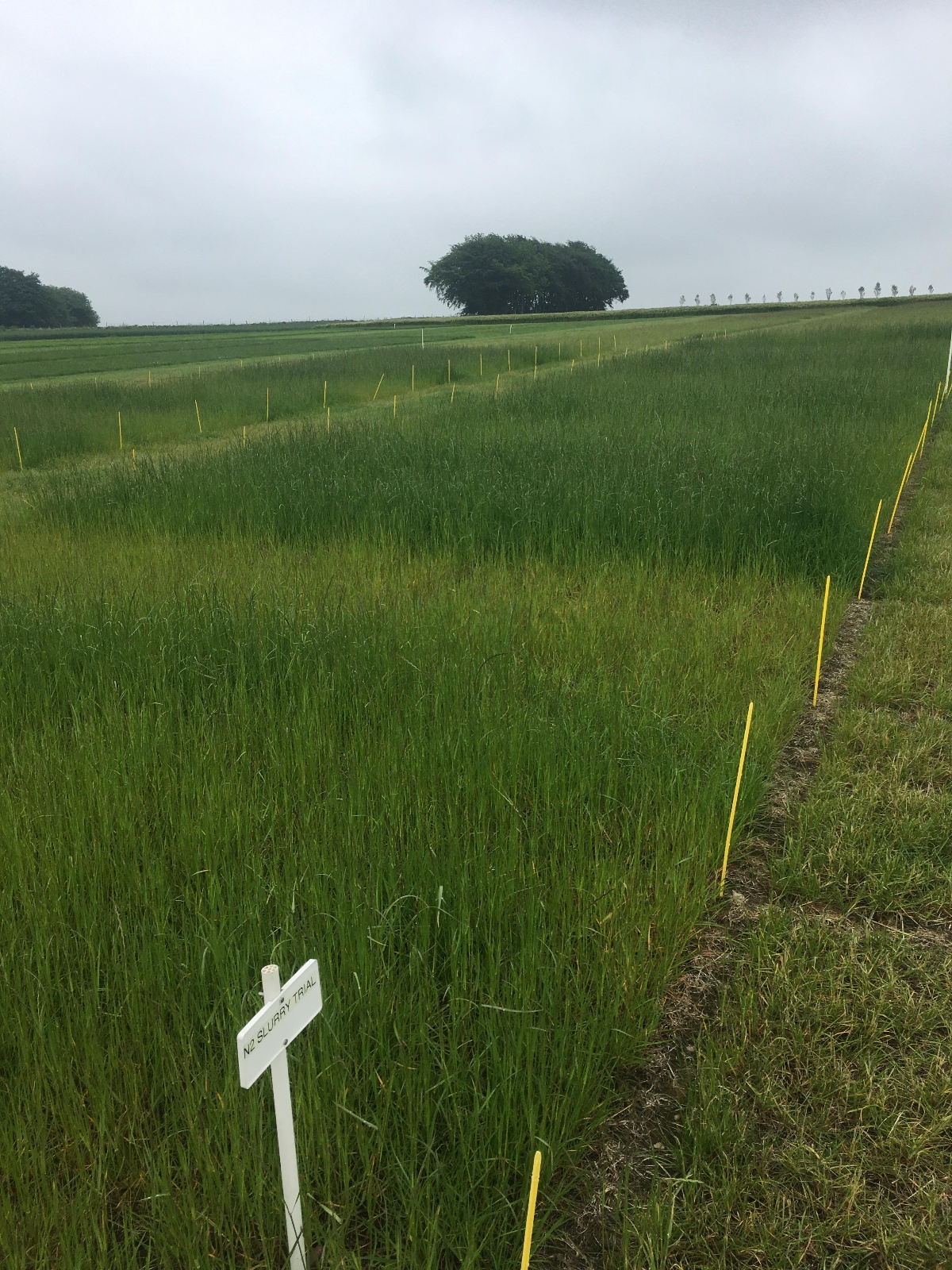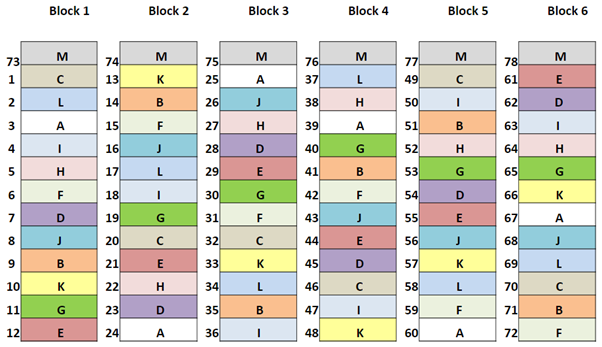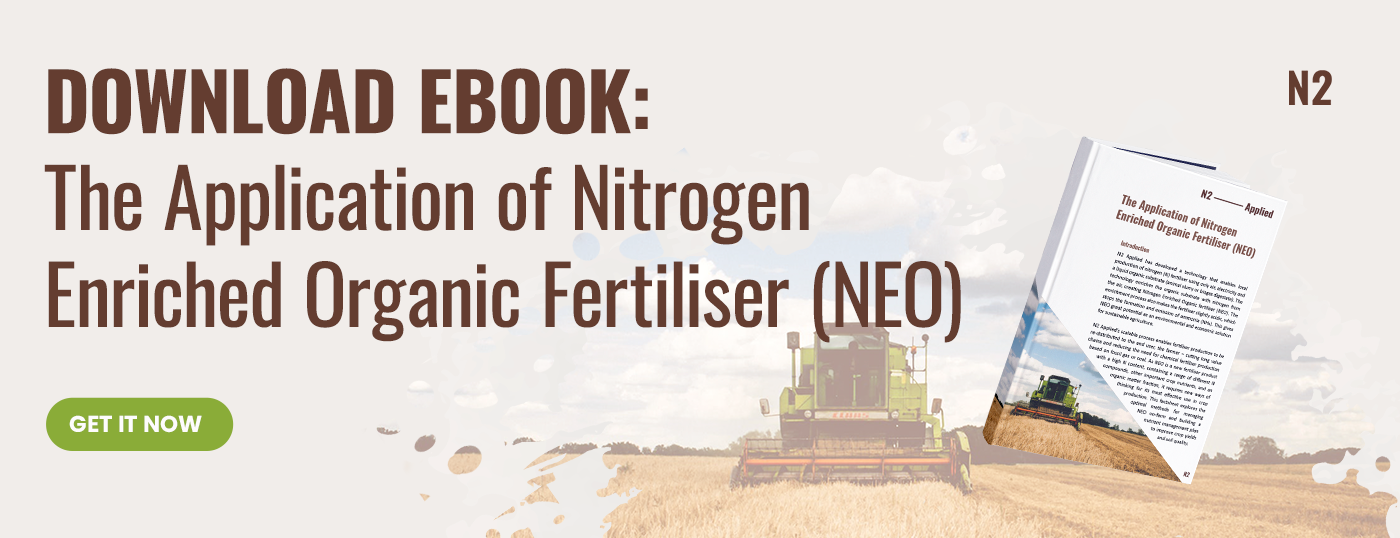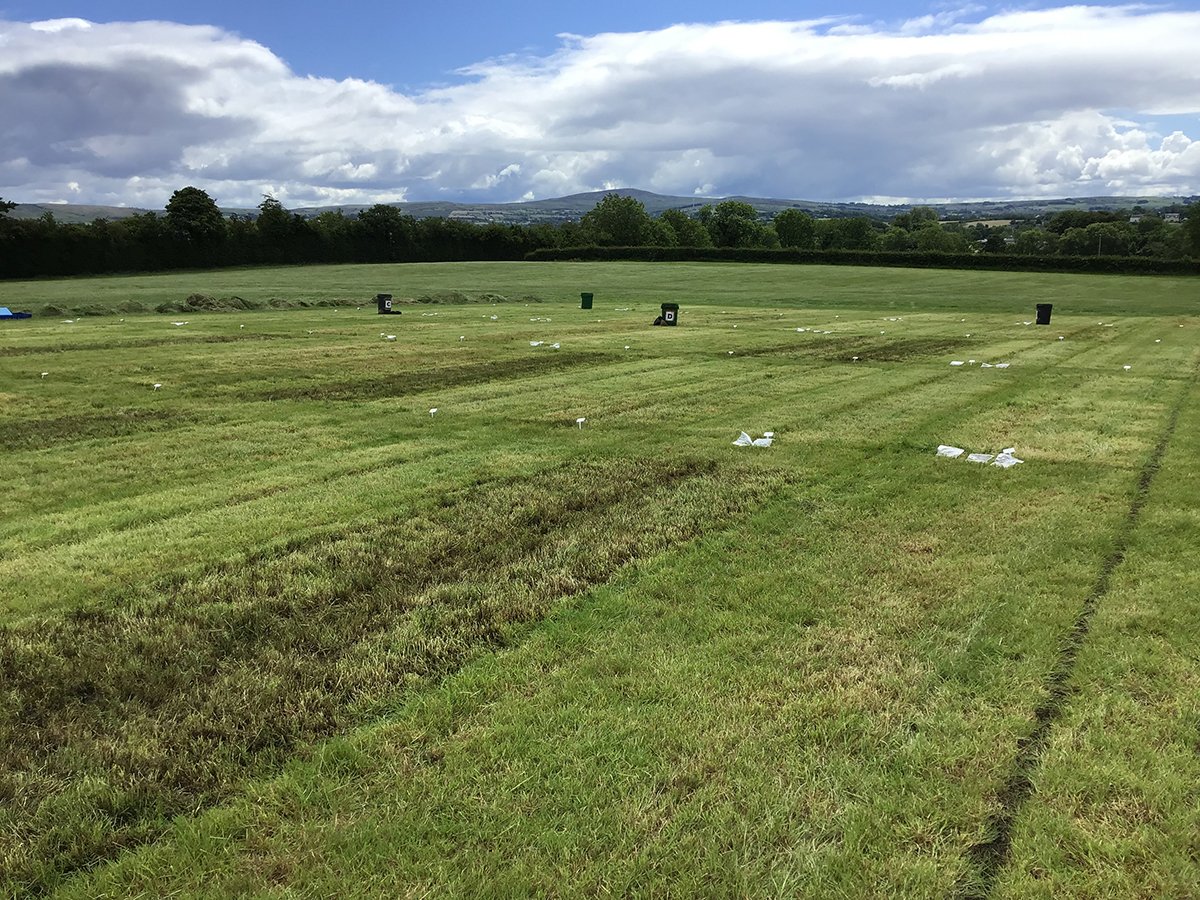The N2 Applied solution has the potential to fundamentally improve food production and crop nutrient management.
The N2 Applied potential
Nitrogen (N) is fixed from the air and added as nitrate to slurries and digestates, which is a high quality and valuable source of crop N whilst also preventing the loss of crop available ammonium-N as ammonia emissions. Additionally, the organic soil conditioning elements and extra crop nutrients (P, K, Mg, S etc.) found in slurry and digestate are retained in the material and can provide crop and soil benefits.
These effects combined mean that the treated Nitrogen Enriched Organic (NEO) fertiliser has the capacity to drive higher crop yields and quality. NEO has the theoretical potential to exceed the Nitrogen Use Efficiency (NUE) and yield potential of both untreated slurries and chemical N fertilisers, by offering the best qualities of both. However, these claims need to be substantiated in the field, and that is the main purpose of the N2 Applied trials portfolio.
Fair comparisons
All N2 Applied trials are carried out with trusted partners, such as ADAS, AFBI and SRUC in the UK, or NLR in Norway, so that results can be quality verified. Designing trials which allow fair comparison of results between treatments is also key. A fair comparison means accurate results can be collected, but also allows us to learn how other variables such as climate and soil type can impact crop growth and NUE.
The comparison of NEO to untreated fertiliser is done by matching their total N contents for field application rates. As both materials are organic fertilisers this reflects real-world management limitations, such as NVZ rules. When comparing NEO to chemical N fertiliser then application rates are instead matched on a crop available N basis. This gives a comparison of how NEO would be considered in a nutrient management plan when calculating crop N requirements. The nutrient content of all materials used in any N2 trial are sent for analysis at independent commercial labs, ensuring that the N content can be accurately matched.
Replicate for confidence
An important consideration in trials is ensuring the confidence and quality of results and isolation of the actual treatment effects, rather than other external factors. Having only one plot of each treatment and then having a problem with one of them, would result in the whole treatment being lost. Also, to perform any statistical analysis at least three results for each treatment are needed, but if one of those is lost then statistical analysis cannot be performed. This would lower confidence in the data. Each treatment in a trial therefore has a minimum of four replicates to provide statistical analysis and insure against loss. More replicates are added into larger trials to further increase the confidence in the data collected.

Figure 1: Blocked, randomised and replicated field plot trial carried out on grass by SRUC, 2020.
Randomised plots
Another important factor to consider in field plot trial design is localised variation. For instance, soil type or soil nutrient status may vary across a field. Grouping plot treatments together could lead to some treatments receiving favourable or poor conditions, skewing results. Grouping plots together could also leave whole treatments susceptible to localised problems, such as a pest or disease outbreaks, damaging crops in a certain area of a field.
To avoid these issues a randomised plot design is implemented in any plot trial. This design ensures no treatments are favoured over any other, and that problems that may occur do not lead to the loss of an entire treatment’s worth of data. Figure 1 displays N2’s trial design used with AFBI in Northern Ireland in 2019. Random plots labelled using letters and numbers rather than treatment type also reduces the risk of investigator bias, stopping anyone working with the data making any assumptions and working purely with the data in front of them.

Figure 2: Randomised plot design of N2 Applied's grassland trials with AFBI, Northern Ireland, 2019. Each block contains one of each treatment type with the order fully randomised.
All the above factors are considered when designing N2 Applied’s field plot trials to guarantee that fair, accurate and confident data is collected. This ensures that better nutrient management decisions for NEO can be made, yield improvements can be substantiated and farmers can trust the results which they are based on.



